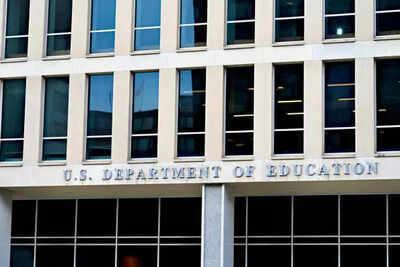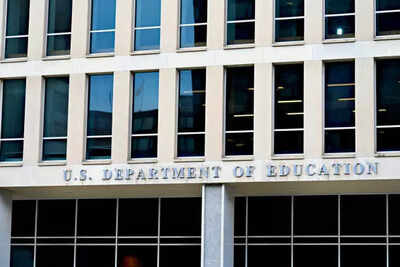Back to work, but not back to normal: The fragile future of America’s Education Department

When the federal government reopened after the longest shutdown in American history, the country was told that normalcy would swiftly follow. Paychecks would resume, agencies would stir back to life, and the public machinery would grind forward again. Yet inside the US Department of Education, an institution already battered by political hostility, workforce contraction, and existential questioning, the return felt less like a restoration and more like a reckoning.The bill signed by President Donald Trump not only restored federal operations through January 30 but also formally reversed the early-October reduction-in-force actions that had targeted thousands across the government. On paper, 465 Education Department employees were slated to reclaim their desks. In practice, many wondered whether those desks still had a purpose, or whether the agency itself was being slowly hollowed out.
A workforce reinstated , but not reassured
The department had been blocked by a federal court from finalizing layoffs during the shutdown, but that didn’t undo the distrust forged in recent months. Staff recalled earlier episodes in which reinstated employees were not allowed to resume duties, instead being placed on paid administrative leave while the agency sought alternative paths to downsize. That pattern cost millions of dollars each week, according to internal estimates cited in court filings, as reported by US media.
Fear of a repeat loomed large.
Nearly 87 percent of the department’s already diminished workforce had been furloughed since October 1. Many learned, only after a union challenge, that their automated email replies had been altered to blame the shutdown on “Democrat Senators,” prompting a ruling from a federal judge ordering the partisan language removed. The episode crystallized a deeper anxiety: The agency’s identity was being reshaped without its employees’ consent.
Shutdown shockwaves: Fragile systems, frayed nerves
The organizational turbulence came at a time when the department’s functional capacity was already stretched dangerously thin. The layoffs initiated on the shutdown’s tenth day would have followed nearly 2,000 earlier separations in the year, through buyouts and restructuring. Entire programme teams administering federal formula grants, including Title I funding for low-income schools and Individuals with Disabilities Education Act allocations, were nearly wiped out.The risk was not theoretical. Districts relying on monthly Impact Aid payments, which offset revenue losses from untaxable federal land, began missing allocations during the shutdown. With Impact Aid staff among those targeted for layoffs, superintendents questioned whether payments would resume on reopening. The stakes were clear: In heavily impacted districts, Impact Aid can constitute up to 70 percent of a district’s operating budget, according to the National Association of Federally Impacted Schools.Meanwhile, Head Start centres, funded by the US Department of Health and Human Services but dependent on parallel federal operations, began suspending services as their annual allocations stalled. For communities with few early-childhood options, these closures represented profound educational and social ruptures.
Leadership signals, and the subtext they carry
Throughout the shutdown, Education Secretary Linda McMahon projected confidence that schools were “operating as normal,” citing the continuity of federal funding pipelines. Her repeated argument that the shutdown proved the Education Department “unnecessary” stood in sharp contrast to the chaos unfolding in districts waiting for federal dollars, compliance guidance, and basic administrative functions.Her stance aligned closely with the administration’s long-standing goal: Shrinking, if not wholly dismantling, the department and returning education authority to states. The shutdown became, intentionally or otherwise, a live demonstration of that ideological experiment.Yet even as the department outwardly insisted operations were unimpeded, it quietly recalled employees who had received layoff notices, requiring them to work without pay as “excepted” personnel to push funds through before statutory deadlines. For staff brought back under those conditions, the message was unmistakable: The agency would use their labour, but not guarantee their futures.
A workplace defined by whiplash
The internal climate grew even more volatile as leadership transitions stalled. Senate-confirmed nominees, including North Dakota state superintendent Kirsten Baesler and civil-rights specialist Kimberley Richey—sat in limbo, unable to be sworn in until the shutdown ended. Key offices, especially those tied to oversight, compliance, and accountability, were effectively headless for weeks.The result was a department operating like a machine missing half its gears, technically functional, but dangerously unstable.Court filings from employee unions described a disturbing level of confusion: Because furloughed staff could not access email, many did not know whether they had received termination notices. Some learned through news reports rather than official communication. For a federal agency tasked with supporting nearly 50 million public-school students, according to National Center for Education Statistics data, such dysfunction carried national consequences.
What reopening really means
The return of the federal workforce should have been a moment of relief. Instead, it revealed a troubling truth: Reopening the government did not reopen trust.The layoffs may have been reversed on paper, but the architecture of uncertainty remains firmly intact. Departments central to federal education oversight, civil rights enforcement, special education compliance, grant administration, stand weakened not by budget cuts alone but by prolonged operational instability.The Education Department’s post-shutdown reality is not one of regained equilibrium but of lingering fragility. Staff may return to their offices, but many will do so knowing the political project targeting their work remains unfinished.
A future still on the line
As the Jan. 30 funding deadline approaches, the nation faces an uncomfortable question: What does it mean when an entire federal education workforce lives one budget extension away from dissolution?For schools dependent on federal programmes, for districts navigating compliance deadlines, and for millions of students whose rights hinge on federal enforcement, the answer carries profound weight.The shutdown ended. But the story of a weakened, destabilised Education Department and the national education system it supports is far from over.





